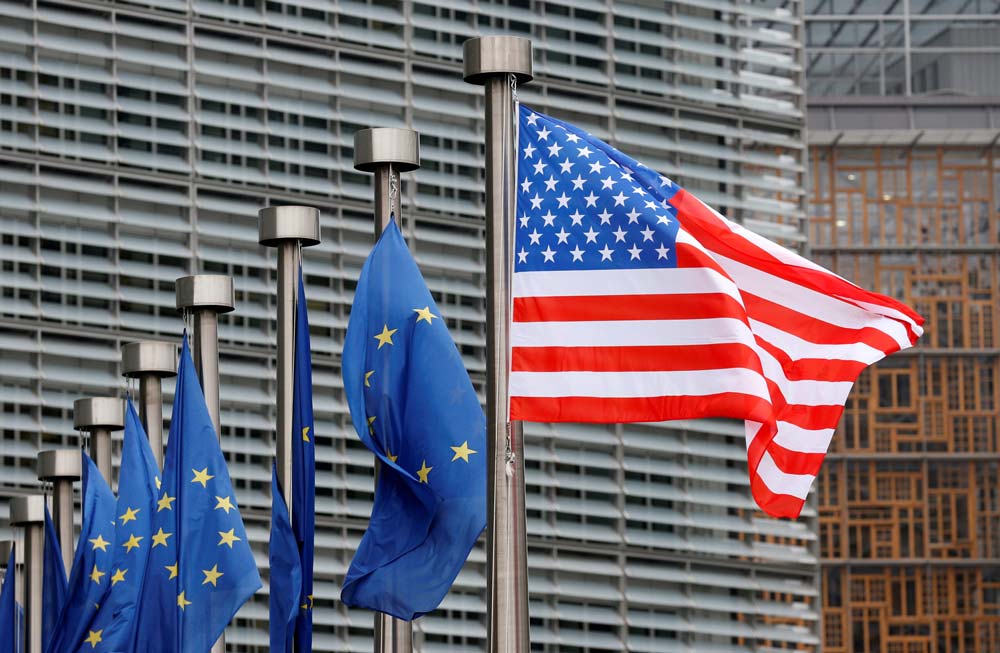In a bold move that has already caused ripples in international trade discussions, former President Donald Trump declared on Saturday, July 12, 2025, that the United States will impose a 30% tariff on goods imported from the European Union (EU) and Mexico. The tariffs, set to take effect on August 1, were announced through letters sent to European Commission President Ursula von der Leyen and Mexican President Claudia Sheinbaum. Trump also shared the letters on his social media platform, Truth Social.
Key Points of the Announcement
- Trump’s tariff policy aims to pressure the EU and Mexico to relocate manufacturing and production to the United States. He stated that EU companies could avoid the tariffs entirely by building and producing goods in the U.S.
- The move is part of Trump’s broader trade strategy to establish what he calls a “reciprocal” trade landscape. This involves rebalancing trade deficits and incentivizing domestic production.
- Trump warned that any retaliation by the EU or Mexico in the form of higher tariffs would trigger further increases on U.S. tariffs, beyond the already announced 30%.
Economic Impact and Reactions
The EU and Mexico are two of the United States’ largest trading partners. In 2022, U.S. imports from the EU totaled $553 billion, while imports from Mexico reached $454.8 billion. Combined, these two regions account for nearly one-third of all U.S. imports.
European Commission President Ursula von der Leyen has expressed concern about the disruptive impact of the tariffs. She stated, “Imposing 30 percent tariffs on EU exports would disrupt essential transatlantic supply chains, to the detriment of businesses, consumers, and patients on both sides of the Atlantic.” Despite the tensions, von der Leyen reaffirmed the EU’s commitment to pursuing a mutually beneficial agreement by the August 1 deadline, while also warning that proportionate countermeasures would be implemented if necessary.
The Mexican government, in a statement issued on Saturday, described the tariffs as “unfair treatment” and voiced its disagreement. Mexican officials revealed that they had met with U.S. trade representatives on July 11 to establish a binational working group aimed at resolving trade disputes. However, they were informed during the meeting that the tariffs would still take effect.
A Broader Trade Strategy
This announcement follows a pattern in Trump’s trade policies. Earlier this year, he threatened a 50% tariff on EU goods, though negotiations between the two parties had appeared to ease tensions. The new tariffs come after a pause in April, when Trump had initially introduced a global 10% tariff on imports from over 60 countries but delayed its implementation to facilitate trade negotiations.
Trump’s administration has also targeted other trading partners, including Canada, Japan, and Brazil, with letters outlining new tariffs ranging from 20% to 50%. Treasury Secretary Scott Bessent praised the UK for securing an early trade deal with the U.S. to avoid such measures, calling it an example of “good faith negotiations” that benefit both sides.
Global Trade Implications
The announcement has sparked concerns about potential economic fallout. Analysts warn that the tariffs could disrupt supply chains, drive up costs for businesses and consumers, and strain diplomatic relations. Markets are already bracing for possible retaliatory actions from the EU and Mexico, which could escalate the trade dispute further.
As the August 1 deadline approaches, businesses and governments around the world will closely watch whether the U.S., EU, and Mexico can reach agreements to mitigate the impact of the tariffs. Without resolutions, the global trade landscape could face significant upheaval in the coming months.











